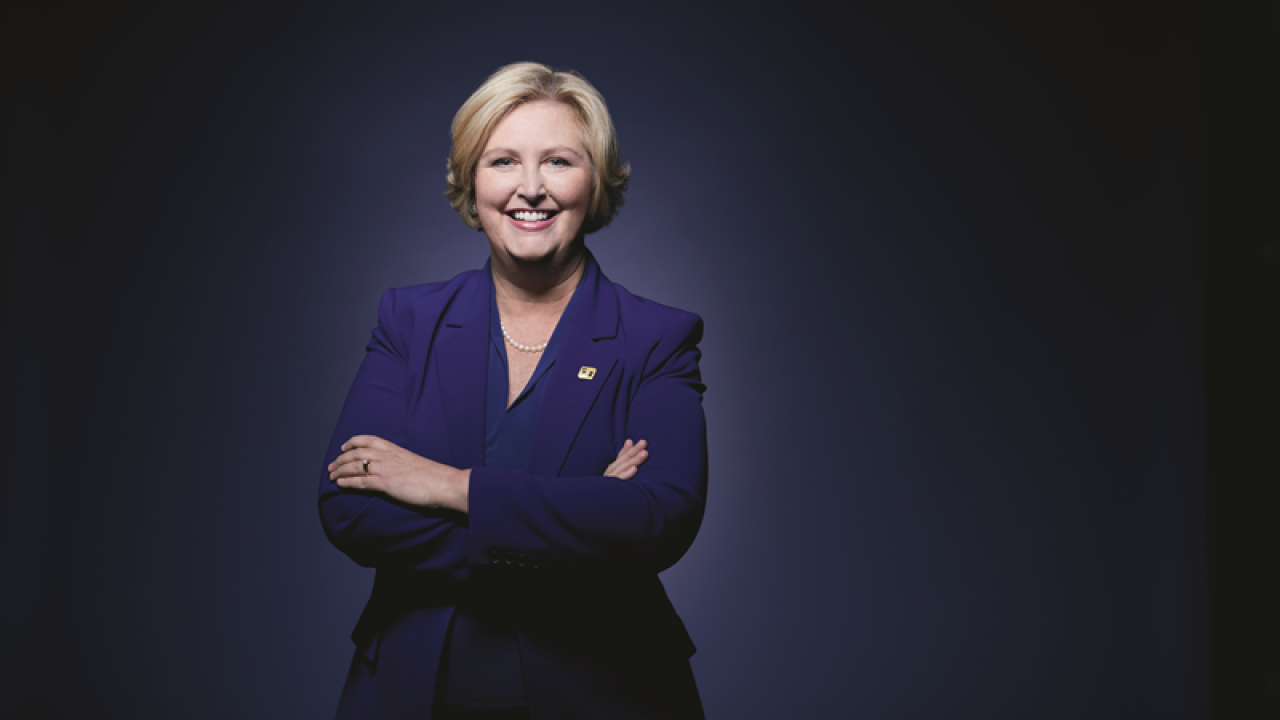Good things come to those who wait. In the case of M&T Bank's slow-motion acquisition of Hudson City Bancorp, the payoff has been a nice improvement on the expense side of the ledger.
Hudson City's yearly expenses were about $280 million before Buffalo, N.Y.-based M&T bought it last fall after waiting more than three years for regulatory approval. M&T trimmed the annual spending rate at the old Hudson City operation to $230 million as of March 31, M&T Chief Financial Officer René Jones said Monday. That number is expected to fall to between $190 million and $200 million by yearend.
"We've kept expenses relatively stable while absorbing Hudson City as well as funding our technology and other initiatives," Jones said during a conference call with analysts.
-
M&T Bank in Buffalo, N.Y., for the first time was able to report a full-quarter impact from its acquisition of Hudson City Bancorp, which took about three and a half years to complete because of regulatory challenges.
April 18 -
Deposits and assets have fallen, and some customers and employees have fled, while Hudson City in Paramus, N.J., has been stuck in an M&A limbo. But the situation might save buyer M&T Bank some headaches later if it can just close the deal.
June 2 -
Costs associated with M&T Bank's successful but prolonged effort to buy Hudson City Bancorp pushed the Buffalo, N.Y., company's fourth-quarter profit lower.
January 19
As a result, the $125 billion-asset M&T's efficiency ratio improved by 446 basis points in the first quarter compared with a year earlier, to 57%. About 280 of those basis points are directly attributable to wringing costs out of Hudson City, Jones said.
The deal also transformed M&T's loan book. Before Hudson City, one- to four-family residential mortgages made up about 13% of M&T's loan portfolio. Now, residential mortgages are the second-largest category at about 29% of the loan book. That is because Hudson City, a thrift in Paramus, N.J., did nearly all of its lending in residential mortgages.
Unlike Hudson City, M&T plans to sell off the majority of the residential mortgages that it originates, Jones said.
Meanwhile, M&T is trying wean the old Hudson City operation from its reliance on home lending. As the deal gave M&T its first exposure to the New York City region, M&T wants to use Hudson City as a platform to do more commercial loans there.
"You actually are creating a commercial bank while you're rightsizing a thrift," Jones said. "If we can make [the Hudson City market in] New Jersey look more like a full-service commercial bank with also retail capabilities … you will see a difference and it will improve the overall profitability profile."
To be certain, M&T has had to spend money on things like integrating Hudson City's computer systems into its own and training its employees. M&T recorded a total of $23 million of merger-related expenses in the first quarter.
M&T has also taken the step of paying customers in the former Hudson City territory a higher-than-average rate on certificates of deposit in an effort to persuade them to stick around. M&T is paying those customers 1.16% on a two-year CD versus 0.5% for customers in the Buffalo area on the same CD, according to the bank's website.
Bob Ramsey, an analyst at FBR Capital Markets, asked when M&T might rein in the generous rates.
"We'll need more time … this year to make sure that those balances stick around and that we have the opportunity to interact with those customers over time," Jones said. "We are maintaining those prices in an effort to reach out to contact those customers through the course of the year."
M&T may have a tougher time preventing customer losses than the typical merger, considering all the time that passed between the Hudson City deal announcement in August 2012 and the closing in October 2015. Hudson City reported several quarters of
The higher CD rates could even crimp M&T's net interest margin by a couple of basis points in the second quarter, Jones said. Still, M&T can turn off the spigot on higher-rate CDs whenever it wants, he said.
"That's totally in our control," Jones said.





